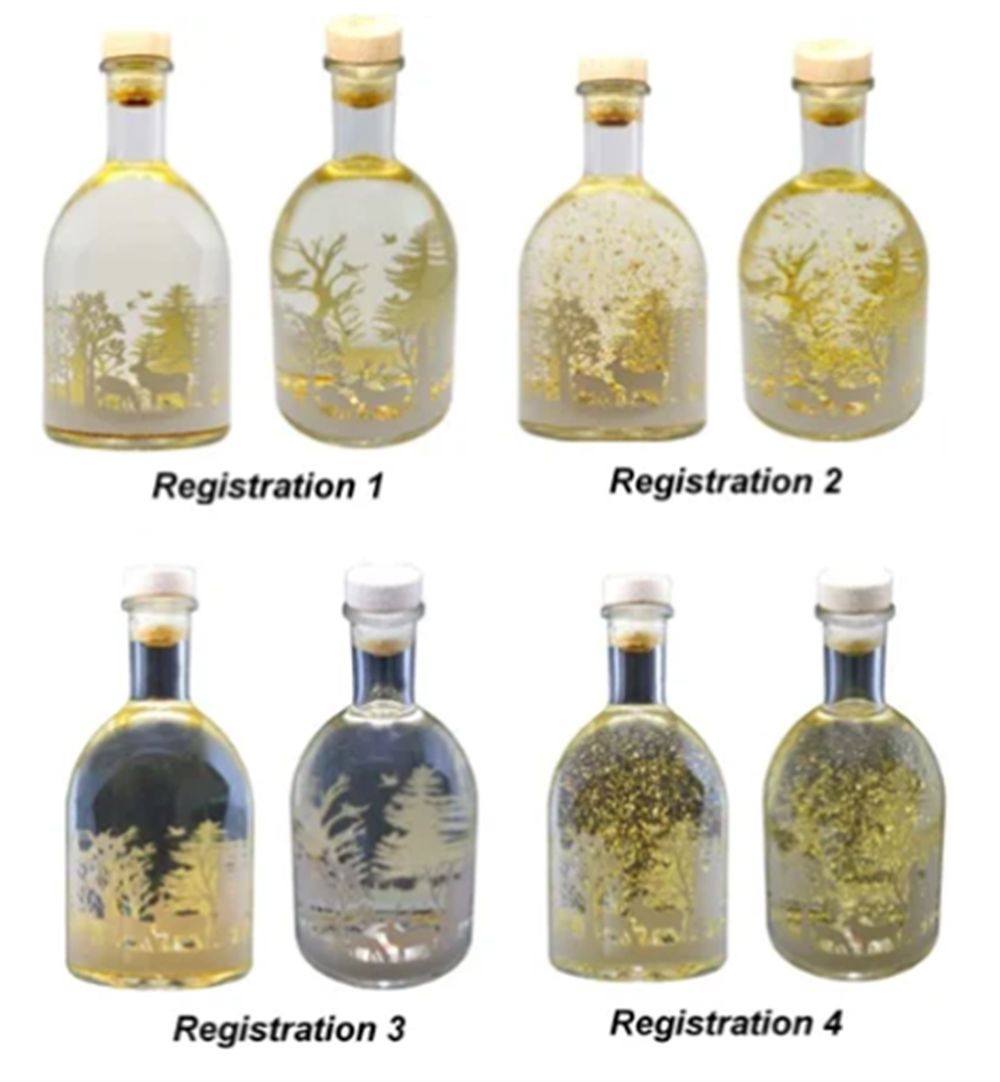In Marks and Spencer PLC v Aldi Stores Limited, the Court of Appeal considered whether Aldi had infringed the registered designs of M&S gin-based liqueur bottles and reviewed the role of the "test period" allowed to designers.
Following the well-known Colin v Cuthbert case of 2021, Marks and Spencer (M&S) and Aldi once again found themselves in another intellectual property dispute in 2023.
Background
In this case, M&S argued that Aldi had infringed their registered designs of gin-based liqueur bottles. M&S' design comprised of gold flakes in liquid with a Christmas themed outline stencilled into the walls of the bottle, and an LED light illuminating the bottle from the bottom. Aldi's bottle also contained gold flakes in a light-up bottle, with winter-themed designs.

Images used in the court judgement.
Legal principles
A registered design is infringed where another design does not produce a different overall impression on the informed user to that produced by the registered design. M&S believed five of their UK design rights were infringed by the Aldi gin liqueur bottle and commenced proceedings in December 2021.
The court followed the principles laid down in a previous case, which were that in assessing the individual character of a registered design compared with an accused design, the court must:
- establish the relevant sector to which the products belong;
- identify the informed user and assess their awareness/ attention to the design;
- decide the designer's degree of freedom in developing their design, ignoring features that were dictated by technical function; and
- compare the two designs.
Decision
The court assessed whether the M&S bottle clearly displayed the features subject to design rights and whether a consumer was given a different overall impression by Aldi's design, concluding that Aldi had indeed infringed M&S' design rights.
The court determined that an informed user would note that the following were features that the two designs had in common:
- the identical shapes of the bottles;
- the identical shapes of the bottles' stoppers;
- a snow effect in the case of two of the registered designs; and
- an integrated light in the case of two of the registered designs.
The court stated that "each of those similarities would appear significant to the informed user and cumulatively they would be striking".
The court also assessed the differences between the parties' bottles. These included:
- the different winter scenes;
- the branding ("The Illusionist" on Aldi's bottle);
- the branding which gave Aldi's bottles a front and back;
- the winter scene on Aldi's bottles was brighter; and
- the stopper on Aldi's bottles had a watch strap label with the "Aldi" logo on the top and were darker in shade than the M&S bottles.
Despite these differences, the court concluded that the common features of the registered designs and Aldi's bottles meant that the latter did not produce a different overall impression on the informed user. The differences between them were of relatively minor detail and, therefore, the marketing of Aldi's gin liqueur products infringed M&S' registered designs.

Images used in the court judgement.
Court of Appeal
In February 2024, the Court of Appeal affirmed the decision, rejecting Aldi's appeal. In doing so, the court clarified several issues that are of wider relevance.
An important issue considered was that disclosures made during the grace period – a 12-month period which allows the designer to test products with the design in-market before deciding whether it is desirable to apply to register the design – should be disregarded in assessing the "design corpus" for infringement purposes. However, this exception doesn't apply to any variations of what becomes the registered design. Therefore, if a designer tests several distinct designs, but only decides to register one, then they must accept the risk that the other designs may in some cases affect the scope of protection of the registered design.
The Court of Appeal also confirmed that the date at which the overall impression of the two designs should be assessed for both validity and infringement was the priority date, not the filing date of the design, because it affects the overall impression of the registered design.
Comment
The case acts as a reminder of the importance of securing necessary rights for intellectual property portfolios and the benefit of enforcing these rights against an infringer. The clarification by the Court of Appeal, particularly on the effect of the grace period, means that designers should think carefully about what designs they market-test and what designs they eventually register, in case these impact the ability to pursue any future infringers.
The content of this article is intended to provide a general guide to the subject matter. Specialist advice should be sought about your specific circumstances.
We operate a free-to-view policy, asking only that you register in order to read all of our content. Please login or register to view the rest of this article.



